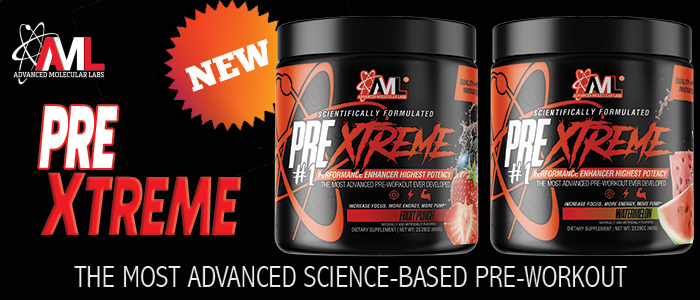


New Research: Blood Flow Restriction (BFR) Training and Betaine for Enhanced Muscle Growth
By Michael J. Rudolph Ph.D.
Senior Science Editor
Synergy is a phenomenon that occurs when combining one stimulus with another causes an effect greater than either stimuli alone. In other words, one plus one is somehow greater than two. The counterintuitive outcome from the synergistic effect makes it seem almost magical. Yet, the truth is, the synergistic effect can typically be understood when each stimulus triggers a similar influence when combined provides a relatively superior impact. Recent scientific evidence indicates blood flow restriction (BFR) training combined with betaine supplementation possesses this seemingly mystical synergistic effect on muscle tissue resulting in remarkable muscle growth and strength [1]. Since both betaine and BFR individually promote fluid influx into the muscle cell causing the muscle cell to swell which ultimately boosts lean body mass and strength, a combination of both BFR and betaine should promote even more muscle swelling for greater synergistic gains in lean body mass and strength. Moreover, employing BFR training with betaine supplementation should provide greater strength and muscle mass while lifting considerably lighter loads than typically required for maximal strength and size gains. Taken together, the ability to considerably increase size and strength with lighter weight provides an excellent alternative training approach that minimizes risk of injury while providing a resistance training protocol for the elderly who normally do not lift heavy weights.
Proper BFR training is safe and effective
Proper BFR training is typically accomplished by wrapping either elbow or knee straps just above the muscle you want to train without wrapping too tightly as you must not completely occlude blood flow for safety reasons. For the standard approach to BFR training, it is necessary to keep the wraps on for the entire exercise providing ample time to trigger the biochemical and physiological effects that strongly augment muscle growth without occluding blood flow for more than 20 minutes in total. Typically, four to five sets are performed at roughly 20 to 30 % of your 1 repetition maximum with at least the last few sets taken to muscular failure [2,3] all while resting less than 1 minute between sets. It is also very important not to exceed 50% of your 1 repetition maximum as heavier weights seem to defeat the BFR-influence mitigating any beneficial results from this form of training.
BFR training produces extraordinary muscle growth and strength lifting relatively light weight
BFR training performed correctly permits adequate blood flow to the muscle while slightly restricting the flow of blood just enough to cause some blood to pool around the muscle. The pooling of blood around the muscle tissue causes an accumulation of metabolites in the muscle cell which forces fluid into the cell ultimately causing the muscle cell to swell. This swelling effect triggers mechanosensors within the muscle cell membrane that elicit several anabolic pathways, including the well-known mTOR pathway, that together crank up muscle protein synthesis promoting muscle growth [4]. Interestingly, cell swelling has been shown to be a key component of the anabolic response that, when prevented, blocks the typical anabolic response [5]. One investigation by Fujita et al. [6] established this link between BFR training and mTOR-driven muscle growth. In this study, six male subjects performed four sets of 15 repetitions of leg extensions at 20% of their 1 repetition maximum with 30 second rest intervals with and without the BFR. Remarkably, the BFR-trained group showed an increase in mTOR activity that was three times larger than the group exercising under normal conditions. This study also showed that BFR training led to an increase in IGF-1 levels that were comparable to those seen in other studies where test subjects performed high-intensity resistance exercise. This substantial increase in IGF-1 levels may directly activate mTOR and muscle protein synthesis.
BFR training by itself also provides remarkable strength enhancement while using considerably lighter loads than normally required for significant strength improvement. This is because BFR preferentially activates fast twitch muscle fiber because BFR training depletes oxygen levels to the working muscles due to the restriction of blood flow. The reduction of available oxygen drives the muscle cell to produce energy without oxygen, or anaerobically, which preferentially activates fast twitch muscle fibers instead of slow twitch muscle fibers as fast twitch muscle fibers prefer anaerobic respiration while slow twitch muscle fibers favor aerobic respiration. Since fast twitch muscle has superior potential for strength, their preferential stimulation over slow twitch muscle provides BFR training the capacity to enhance strength appreciably while, again, lifting considerably lighter loads. In fact, a study by Takarada et al. [7] showed that BFR training produced considerable strength gains in test subjects that performed low intensity (30% of 1 repetition maximum) triceps extensions until failure with BFR relative to a second group that did high-intensity resistance exercise (triceps extension at 80% of their 1 repetition maximum) without BFR. The group performing BFR training with lighter loads had similar increases in strength to the high-intensity group demonstrating BFR training can improve strength to a similar degree as high-intensity resistance training even when using much less resistance.
Betaine promotes muscle swelling similar to BFR training boosting muscle size and strength
The ability of BFR training to induce muscle swelling should be potentiated by the natural osmolyte betaine as this compound normally protects the cell against dehydration by increasing cellular water retention through osmosis. The ability of betaine to maintain hydration also gives this compound the capacity to reduce the negative impact dehydration can have on exercise performance such as increased heart rate, increased rate of glycogen degradation, elevated muscle temperature, and increased lactate levels. Betaine’s role as an osmolyte most certainly contributes to the independent muscle-building influence of betaine by causing an influx of fluid into the muscle cell which induces muscle cell swelling stimulating protein synthesis and decreasing protein breakdown in the muscle cell resulting in muscle growth [8-10].
In addition to betaine's ability to counter dehydration and trigger muscle hypertrophy, betaine also plays a key role as a methyl donor in the biosynthesis of the muscle-building compound creatine [11,12]. Indeed, it has been shown that betaine ingestion between two to six grams per day significantly increases anaerobic power in the bench press and squat which likely stems, in part, from betaine’s role in creatine production in the body [13]. Taken together, the diverse impact of betaine on these relatively distinct aspects of exercise performance, especially on muscle cell swelling, underscores the tremendous promise of betaine as a nutritional supplement especially when combined with BFR training.
The ability of betaine to increase cellular water retention within the muscle cell should heighten intracellular fluid influx brought on by BFR training ultimately leading to an even greater exercise-stimulated anabolic response. In fact, BFR training with betaine supplementation represents a way to improve muscular performance synergistically while lifting much lighter loads providing a practical training benefit for anyone simply wanting to lessen their training load while still advancing size and/or strength. The combinatorial approach employing BFR training with betaine intake also provides an invaluable clinical aid to improve muscular performance in the elderly ultimately preventing the typical loss of muscle seen in the elderly that can severely diminish quality of life.
References:
- Machek, S.B., Cardaci, T.D., and Willoughby, D.S. Blood Flow Restriction Training and Betaine Supplementation as a Novel Combined Modality to Augment Skeletal Muscle Adaptation: A Short Review. Strength and Conditioning Journal.
- Farup, J., de Paoli, F., Bjerg, K., Riis, S., Ringgard, S., and Vissing, K. Blood flow restricted and traditional resistance training performed to fatigue produce equal muscle hypertrophy. Scand J Med Sci Sports 25, 754-763.
- Hwang, P.S., and Willoughby, D.S. Mechanisms Behind Blood Flow-Restricted Training and its Effect Toward Muscle Growth. J Strength Cond Res 33 Suppl 1, S167-S179.
- Wilson, J.M., Lowery, R.P., Joy, J.M., Loenneke, J.P., and Naimo, M.A. Practical blood flow restriction training increases acute determinants of hypertrophy without increasing indices of muscle damage. J Strength Cond Res 27, 3068-3075.
- Loenneke, J.P., Fahs, C.A., Rossow, L.M., Abe, T., and Bemben, M.G. The anabolic benefits of venous blood flow restriction training may be induced by muscle cell swelling. Med Hypotheses 78, 151-154.
- Fujita, S., Abe, T., Drummond, M.J., Cadenas, J.G., Dreyer, H.C., Sato, Y., Volpi, E., and Rasmussen, B.B. (2007). Blood flow restriction during low-intensity resistance exercise increases S6K1 phosphorylation and muscle protein synthesis. J Appl Physiol (1985) 103, 903-910.
- Takarada, Y., Nakamura, Y., Aruga, S., Onda, T., Miyazaki, S., and Ishii, N. (2000). Rapid increase in plasma growth hormone after low-intensity resistance exercise with vascular occlusion. J Appl Physiol (1985) 88, 61-65.
- Manders, R.J., Koopman, R., Beelen, M., Gijsen, A.P., Wodzig, W.K., Saris, W.H., and van Loon, L.J. (2008). The muscle protein synthetic response to carbohydrate and protein ingestion is not impaired in men with longstanding type 2 diabetes. J Nutr 138, 1079-1085.
- Pasiakos, S.M., McClung, H.L., McClung, J.P., Margolis, L.M., Andersen, N.E., Cloutier, G.J., Pikosky, M.A., Rood, J.C., Fielding, R.A., and Young, A.J. (2011). Leucine-enriched essential amino acid supplementation during moderate steady state exercise enhances postexercise muscle protein synthesis. Am J Clin Nutr 94, 809-818.
- Walker, D.K., Dickinson, J.M., Timmerman, K.L., Drummond, M.J., Reidy, P.T., Fry, C.S., Gundermann, D.M., and Rasmussen, B.B. (2011). Exercise, amino acids, and aging in the control of human muscle protein synthesis. Med Sci Sports Exerc 43, 2249-2258.
- Bemben, M.G., and Lamont, H.S. (2005). Creatine supplementation and exercise performance: recent findings. Sports Med 35, 107-125.
- Harris, R.C., Soderlund, K., and Hultman, E. (1992). Elevation of creatine in resting and exercised muscle of normal subjects by creatine supplementation. Clin Sci (Lond) 83, 367-374.
- Willoughby, D.S., and Rosene, J. (2001). Effects of oral creatine and resistance training on myosin heavy chain expression. Med Sci Sports Exerc 33, 1674-1681.





